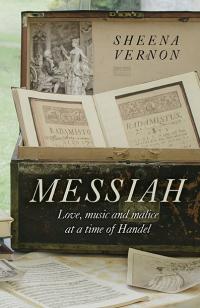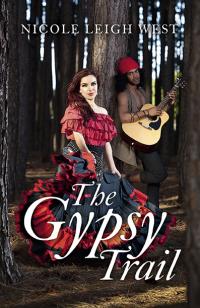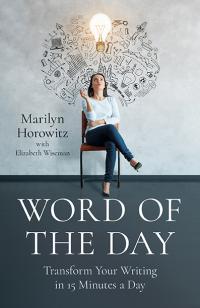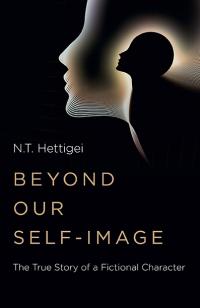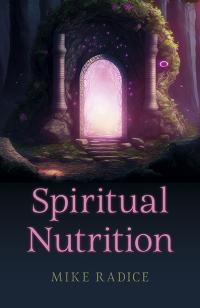
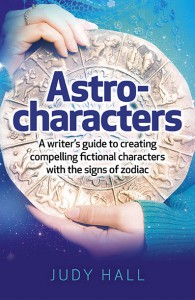 “Glastonbury is a gateway to the Unseen. It has been a holy place and pilgrim-way from
time immemorial, and to this day it sends its ancient call into the heart of the race it guards, and still we answer to the inner voice….The poetry of the soul writes itself in
Glastonbury.”
“Glastonbury is a gateway to the Unseen. It has been a holy place and pilgrim-way from
time immemorial, and to this day it sends its ancient call into the heart of the race it guards, and still we answer to the inner voice….The poetry of the soul writes itself in
Glastonbury.”
~Dion Fortune, Avalon of the Heart
I recently facilitated a ‘Write Now’ workshop in Glastonbury. I wanted to use the atmosphere of that ancient place to awaken something extraordinary in the participants. We spent the first evening in a stone built cellar chapel, a remnant of the ecclesiastical past that has a glimpse of something much older and more pagan at its heart. Glastonbury has, after all, been sacred for thousands of years. Here we confronted the parts of us that criticise and sabotage and generally get in the way of becoming our incredible creative selves, and we met our wise mentor to inspire us. You can do this for yourself through a simple visualisation (the subject of another article). I chose Glastonbury for the workshop because it is an incredible setting but even somewhere mundane can illuminate your story.
Setting
The setting is where your characters live. Setting the scene, the atmosphere and ambience for your story is vital but, although it is telling you things you need to know, these have to be cleverly slipped in, almost inconsequentially, they are hooks that draw your reader in. Be subtle. What we don’t need is a block of clinical description, or a condiment of clichés. Above all, you need to infuse your story with a sense of place, to convey its essence. Every place has its story to tell and you can use a sense of place to set the scene or to tell the actual story – or interweave both. My writing group’s setting was Glastonbury. The essence is always sacred spirituality but the vehicle has changed many times over the centuries. And modern day Glastonbury – as in previous times – has more than a touch of the profane about it as a walk down the High Street showed. Participants were encouraged to use this contrast in their writing. Open your eyes, ears, nose and sense of touch as you journey through the landscape, inner and outer.
The Glastonbury landscape
Glastonbury sits in the middle of a landscape zodiac. These ancient hills are full of stories waiting to be told. At one time Glastonbury stood tall above encircling marshes, in a shining sea. The Tor, healing well, sacred tree, and Abbey ruins are today enfolded within a landscape zodiac that may have been trodden by Jesus Christ himself. Tradition says he came here three times as a child. No wonder this site is designated the heart chakra of our world. In the Pagan view of the world, Avalon was where the dead went to the otherworld and where King Arthur and his knights await their call to return. Magical and mystical, Avalon exists in a parallel dimension to Glastonbury and is seen only through the inner eye of vision. Here the Grail resides, the legendary cup of Christ that has much older connotations. Avalon is the sacred heart of this landscape, the etheric chamber of the heart chakra of the world. Glastonbury is an interconnection of sacred sites from different traditions that create one numinous whole.
The Tor and the Labyrinth
Glastonbury Tor was home to Gwyn ap Nudd, King of the Fairies and Lord of the Underworld. It is also one of the places where King Arthur is said to lie awaiting the call to rise again and bring England to glory. Considerable mythological evidence exists for the presence of this king at Avalon. As Dion Fortune said, “the Tor is indeed the Hill of Vision for any whose eyes have the least inclination to open upon another world.”
Now dominated by the tower of a ruined church that was cast down in an earthquake in 1275, it is believed that a stone circle once crowned the Tor, a Temple to the Sun. It is still an extraordinary experience to stand on the Tor at full moon and see the setting sun slowly sink into the west as the shining moon majestically rises in the east. Sunrise and sunset on the old English folk festivals of Beltane (May 1) and Llughnasadh or Lammas (August 1) are perfectly aligned along the axis of the Tor. The church was sacred to St. Michael, the Archangel of fire. In Christian tradition, Michael was the dragon-slayer who threw down the old Pagan gods. Before Christianity, the Tor was perceived as an enormous dragon lying in the landscape. Around the Tor wind the coils of a huge, multi-dimensional, serpentine labyrinth, an ancient ceremonial, processional way. Labyrinths and spirals were traditionally a part of Goddess worship, symbolizing the soul’s journey through birth, death, and rebirth. Today the labyrinth is used as a Goddess pathway into the heart.
Exercise
Picture yourself ascending the spiral labyrinth as it winds its way up and around the Tor. When you get to the top, you are in the heart chakra of the world. Feel the beating heart of Mother Earth coming to you through your connection with the Tor. Feel how it resonates within your own heart as the beats synchronize. If you are feeling brave, enter the cave mouth below the tower and walk down into the centre of the Tor. What and who do you meet?
Alchemical Marriage: The Red and White Springs
Glastonbury’s Red and White Springs once flowed freely, one from deep within the Tor itself, the other from the foot of the adjoining Chalice Hill, until they mingled in a sacred stream: the Brue. As Dion Fortune says, this site was sacred to the Old Gods and their dark powers, and she suggests that the well was the magic mirror of Morgan le Fay. Chalice Hill was once the domain of this dark half-sister of King Arthur. Pupil of the legendary magician Merlin, she wove spells around her brother to ensnare him. Later, Chalice Hill was the mythical home of the Fisher King of Arthurian legend who suffered eternally from a grievous wound in whose heart he kept the Grail. Iron stains the Chalice Well spring deep red and the water looks like magical blood. Calcium deposits keep the White Spring clear. The two form an alchemical marriage. The eternally renewing phoenix, symbol of Aquarius in the Glastonbury zodiac, springs from this spot drinking the water of life from the springs.
Below the Vesica Pisces Chalice Well cover, designed by metaphysician Bligh Bond in the early twentieth century, lies an ancient stone chamber large enough to hold a standing man. Its three sides were hollowed from a single piece of Sarsen stone carried many miles to this place. A sluice gate enables it to be emptied and refilled. Many people believe this was an initiation chamber for ancient purification mysteries that brought about death and rebirth. Others believe that a Grail cup was found here. As the sun rises over the Tor on Mid-summer Day, a shaft of light penetrates the well chamber and touches the heart of anyone who stands there.
Exercise:
Imagine what it must have been like to stand in that chamber, blindfolded, to feel and hear it fill with water. But not to see. Describe the sensation of the water creeping up your body. Bubbling into your mouth and your ears. What fears emerge, how does it feel to be released? Does it lead to en-darkenment or en-lightenment?
Creating a setting for your characters
All it takes to create believable places for your characters to inhabit is a little bit of knowledge and a dollop of imagination. At the end of ‘The Birth of Venus’ Sarah Dunant describes how she used modern day Florence (where she has a flat) to imagine what it would have been like five hundred years ago. She describes how all the old buildings still exist, so she used her imagination to move from what Florence smells and sounds like today to how it would have been. This is how you move deep under the skin of a place and immerse yourself in how it feels to be in that place. When you know that, you can share it with your reader.
When setting the scene avoid large chunks of description. Particularly when you are starting a book, chapter or story, don’t build up gradually. Go straight in and begin where possible at a point of high drama or tension – and use plenty of dialogue. This is a radio description of a tidal estuary but we can instantly see the place in our mind: ‘the tide retreats, the sun lights up a landscape of mercury and the birds swoop in to hunt’.
Introduce your characters quickly. You can describe things in more detail later as you interweave the place into the plot but you must hook your reader in immediately. However, a sense of where the action is taking place helps to draw the reader in. Remember to connect your character to the landscape, if they are in an environment that is strange to them have them notice the oddities and differences and show that they feel uneasy or excited until they have settled in. If they are familiar with it, they might take for granted things that the reader will find stimulating or intriguing. Think about the following description, what would you expect to happen next, are the ingredients all there? And, where do you think the story is set?
‘They had reached a place where the path dipped down into a dried-up watercourse. There was a termite mound to one side of it, and on the other, a small expanse of rock rising out of the red earth. There was the chewed-up pith of sugar cane lying to the side of the path and a fragment of broken blue glass, which caught the sun. Not far away a goat was standing on its hind legs nibbling at the less accessible leaves of a shrub. It was a good place to sit and listen, under a sky that had seen so much and heard so much that one more wicked deed would surely make no difference.’
That’s Alexander McCall Smith in Botswana and one of the clients is about to reveal a long held secret that he didn’t feel able to share within the walls of No.1 Ladies Detective Agency. That chewed pith makes it a very everyday place, not mysterious or magical although there is that glint of light from the broken bottle. The pith has been chewed and spat out – let go of – but the goat hints at how difficult it will be to access this secret that has been hidden for so long.
Choosing your setting
Not many books on writing mention the setting of the story but it is crucial if you are to set the plot and the characters firmly into the landscape and timeframe. In other words, it gives context. If you get the details right, it can take you immediately into the historical period you are dealing with, sets the mood and creates the atmosphere. A setting can also create tension or anxiety and be the driving force behind the way the story pans out. It can be symbolic or a metaphor for what is going on in a character – a house that is falling apart can reflect the gradual – or rapid – disintegration of its occupants for instance. An isolated or bleak house gives a sense of loneliness and so on.
While it is preferable to have visited the place itself, people do set their stories in countries they have never visited. They use guide books or Google Earth – the downside is that you never get the smells on Google Earth but apparently that is about to change. A useful additional source is an autobiographical story from someone who has lived there – this gives you the little things a guide book doesn’t pick up but which make the reader feel they too are inhabiting that place. Remember that while you may not have been there, your reader could well have been or know enough about the country to pick up inconsistencies which will throw them out of the story reactivating disbelief, instead of being carried along.
Old maps are a useful source as is drawing out a map/plan for yourself of your story’s landscape and making sure people don’t do stupid things that take them out of the constraints of that landscape. (If you’ve got to another world through the back of the wardrobe, remember to mention the wardrobe first for instance.)
Bear in mind that weather plays a great part in shaping not only landscape but also the characters that inhabit it.
This is the start of my novel Torn Clouds, published by O Books, which is set mostly in Egypt and weaves between five thousand years ago and the present time so I chose the British Museum for the opening, hinting at what was to come and hooking the reader into wanting to know more but not revealing too much as telling them too much at the beginning means they might as well not bother to read the rest.
“Tell me, exactly why are you pouring beer over the lion goddesses’ head? It’s not a sight you see too often in the British Museum.” A face peers quizzically at me over the shoulder of My Lady.
My heart thrums as I turn to the man stepping out from behind the great black basalt statue. As his laugh echoes down the gallery lighting up the gloom, the stranger’s sky-blue eyes crinkle at the edges. His long chestnut curls gleam in disarray and, high on his cheek, a crescent moon-shaped scar glows white. It’s alright, this casually dressed stranger poses no threat to me. Smiling, I turn back to my task.
Quickly I offer bread to my Lady’s mouth.
All honour to Sekhmet, Sa Sekhem Sahu.
As I turn back to the tall stranger, a sudden shaft of sunlight catches the golden amulet at his throat and my hand moves instinctively to touch my own. As I finger the cool stone at its centre, my heart insists that it cannot be coincidence that he too is wearing My Lady’s emblem.
“Ere, I told you, you can’t do that feedin’ the lion stuff in ‘ere. It’s not the bleedin’ zoo.” The
grumpy old attendant mutters again as he starts towards us.
“Oh yes, we can. She just did.” My newfound friend grins. “But I think we’d better go to the coffee shop so you can tell me why. Shall we?” Courteously he gestures towards the door. Will he take my arm? No, not yet, he’s too impatient to do that now.
His long stride propels me down the corridor, urging me past the book shop and into the formica and chrome interior I have come to know so well. Tingles dance up my spine. Why do some of the best, and worst, moments of my life happen here? And what am I to tell him? Can I really say… no, surely not…
Mental description or verbal – and what about view-point?
One of the things many writers battle with is whether the description should be visual – what the character sees and comments on inside his or her head – or aural, described to someone else through speech. The view-point (perspective stance) taken will considerably influence how you are able to describe things both in terms of the setting and the action. If there’s only one person present, it’s all inside the head and no dialogue can take place unless your character speaks to himself (which is permissible!). But this can be described in a very personal way ‘I’, or in an impersonal fashion ‘the character’s name/he’. If there are two people present dialogue can be used to bring the scene alive but you need to decide from which perspective the scene will be described.
In something which is written from the personal perspective, ‘I’, the narrator can only tell us what goes on in his head and report events at which he wasn’t present by repeating to us what other people told him after the event and what that evokes in his mind and emotions. For instance, in one example a secretive house cannot be seen from anywhere outside its grounds – a stark contrast to how it is later in the book when they’ve had to sell off part of the estate for council housing which is positioned right in front of the house, part of the concealing wall having been torn down. It’s a metaphor for what is happening to the house and its inhabitants. The house and the occupants are opened up to public gaze and, as the story unfolds, everyone in the surrounding countryside is drawn into the house through the events that occur there. Similarly a slight hesitation before entering the house is a hook that conveys the ‘other worldly’ nature of the house and hints at the supernatural experiences that will take place there. You don’t realise this at first reading, only when the story has unfolded. The other main character’s experience of living in the house is shared in dialogue between the two characters and tells us both the past and present story - bringing the house alive, with characters from its past. It hints at things to come.
Using all your senses
Close your eyes and ask yourself:
What is the first smell you remember?
What does it bring back to you of childhood and the places and people around you?
Now think about the first sounds you remember.
And what you first saw.
Which was the most evocative? What happens if you leave one of the senses out?
People tend to see places with their eyes – and therefore describe a visual picture for the reader. The sense of smell is evocative but so often overlooked, it can take you instantly to a place. If you’ve ever been in a back alley in Greece or the Balaerics in summer for instance, the reek of the dustbins instantly transports you. I used the word ‘reek’ to distinguish between winter and summer visits in my short story ‘Prelude in Valdemossa’:
Three cats stalk a tall, green wheelie bin. Elegant toms on a rain-washed street.
Suddenly one, thinner than the rest, leaps and dives in. He surfaces with his spoils – a bone over which they fight. It seems a poor reward for such a charming brigand.
I’d like to linger but the tour guide is strident: “This way please. Do not be separated. Follow me.”
Raising her umbrella in the air, she strides forward. Lethargically I follow into the winter gloom...
There is a sudden whiff of coffee and I half turn, it’s exactly what I need. “Could I catch up with you later, I—”
But the tour guide’s umbrella is insistent: “Come along!”
Herded past a dark, forbidding wall we enter a tall church, ornate in the Spanish style. Rich gilding sparkles light above, deep red porphyry spilled like candlewax oozes coldness at my feet and candles flicker. The air drifts heavy with incense that catches at my throat. Terracotta tiles that had once been richly decorated are mostly cracked and bare where endless feet have polished them away, but in one or two places their colours shine out so that I seem to see the floor whole and beautiful once more…
***
Tomcats still stalked the tall, green wheelie bin. Reeking now, it shimmered in dusty heat. The hot August sun was almost unbearable as I rushed…
Similarly sound can be a feature of a place – birdsong, insect noise or the lack of it gives atmosphere and Sarah Waters’ mention of a bell sets an aural memory in place that will be repeated – with increasing menace – throughout one of her books. She uses sound to instil quiet terror:
‘But then, the next time it came, the pattering figure seemed to draw closer to the door, seemed to brush against it with an elbow or a hand, and the times after that, the pattering footsteps were accompanied by a light sort of grating sound. . . Mrs Ayres understood suddenly that, as it ran, the figure was catching at the panels of wood with its fingernails. She had a distinct impression of a small, sharp-fingered hand – a child’s hand, she realised it was; and the thought was such a startling one, she scrambled back from the door in sudden panic, tearing her stockings at the knee…
At that, at their loudest point, the footsteps abruptly ceased. …She held her breath, until all she could hear, as if on the surface of the silence, was the rapid thumping of her own heartbeat.’
Describe without using clichés:
A sunset at Glastonbury
A stormy day at Glastonbury
Your favourite place
Your least favourite place
Try including all your senses or only one and see what a difference that makes.
Rewrite the following paragraph, changing the view-point, using dialogue and avoiding the cliché! Set the scene anywhere you like, real or imagined.
‘In the still bright moonlight the group of old ruined buildings which lay before them looked like something out of a fairy-tale. Judging from the shape of the windows, at first Amelia thought the main building must have once been a church or chapel, but when she mentioned this to George he said he thought the disposition of all the buildings meant it was more likely perhaps to have been a small priory or convent, particularly given its position.
(Charlotte Bingham, ‘The Kissing Garden’ – it does get more lively in the next few paragraphs but still seems somewhat stilted and formal which reflects the characters and their relationship at that time, and also the timescale which was just post first world war.)
Enjoy your writing!
More descriptions of Glastonbury and other sacred sites throughout the world will be found in my book Crystals and Sacred Sites (Fairwinds Press, US 2013). Torn Clouds is published by O Books and Prelude in Valdemossa (a prize winner in the annual Rider Haggard short story competition) is on my website www.judyhall.co.uk
Buy Paperback: AMAZON UK BARNES & NOBLE HIVE INDIEBOUND
Buy eBook: BARNES & NOBLE HIVE
This article was first published in The Writer's Wheel Magazine Issue 3
Categories:
0 comments on this article

